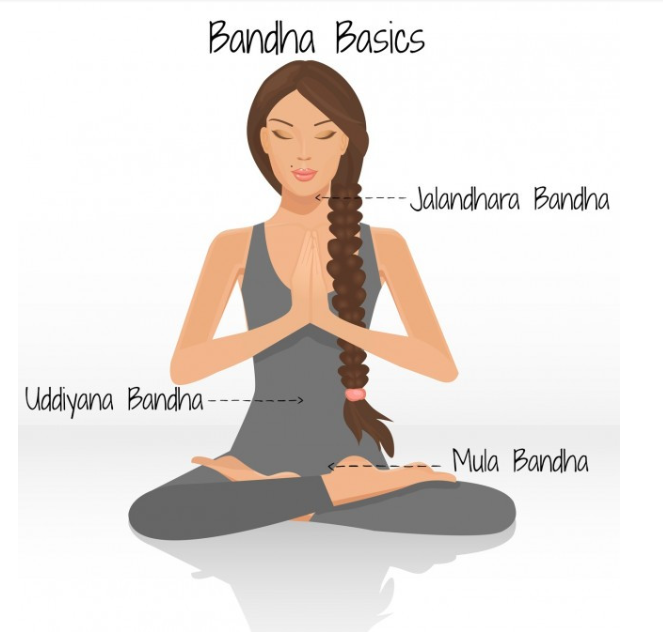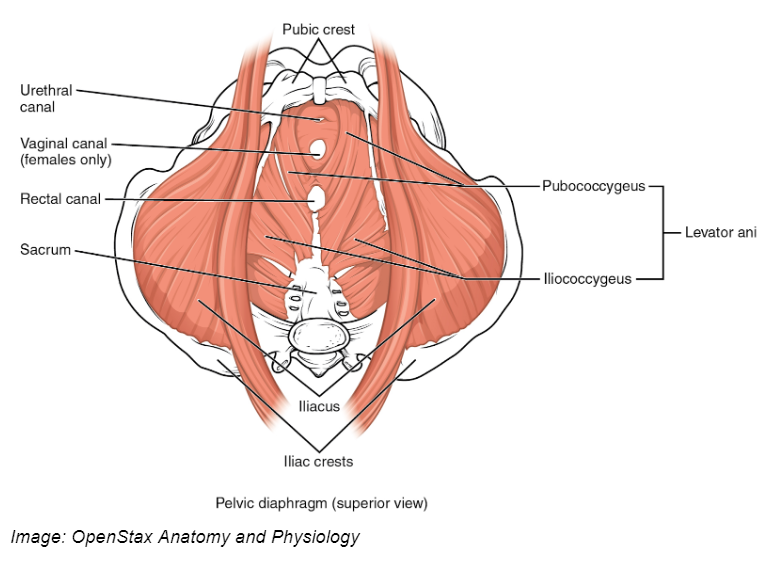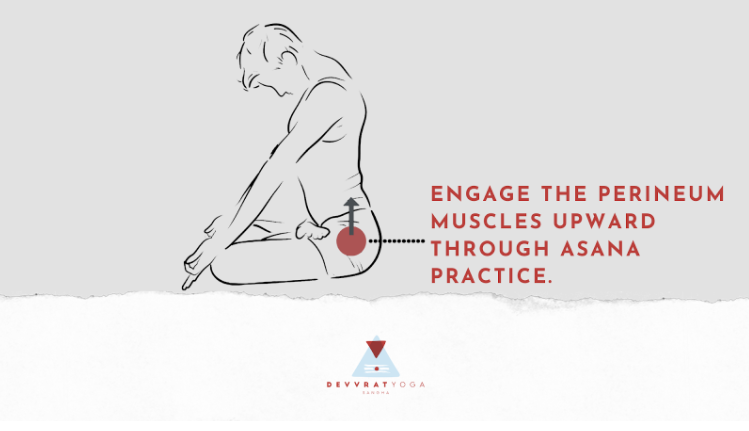What is Mula Bandha( Root Lock ):
Mula Bandha means ‘root lock’ and its name derives from its location at the root of the spine. The Bandhas are both physical locks and energetic valves that are activated by engaging specific muscles in the body. There are four types of locks that serve different functions in both the body as well as at the energetic or subtle level: the Mula Bandha (root lock), Uddiyana Bandha (abdominal lock), Jalandhara Bandha (chin lock), and when all three are combined simultaneously, we create the fourth lock Maha Bandha (great lock). In this post we will gain an understanding of the widespread beneficial effects on our physiology, and the subtle body. The Hatha Yoga Pradipika, an ancient yoga manual on hatha yoga, claims that:
“Even an old person becomes young by constantly practicing Mula Bandha” –Hatha Yoga Pradipika

This is an impressive claim suggesting that the practice of Mula Bandha will yield dramatic results when practiced regularly. While it is unlikely that the simple practice of activating a group of muscles will miraculously hack your biology to reverse aging, there is something to be said for practicing Mula Bandha in a wider context. When it is integrated within the entire scope of yogic disciplines and philosophy, it will provide us with benefits on both the physical and subtle level, the result of which is inevitably radiant health due to the abundant flow of prana.
Physiological Anatomy of Root Lock
Through the lens of modern physiology, Mula Bandha can be taught simply as the activation and engagement of the perineal muscles. Anatomically, the Mula Bandha is a diamond shaped area of muscles that covers the space between the pubic bone, the two ischium (sitting bones, which can be regarded as the sides of the diamond) and the coccyx (tailbone). The muscles involved are the coccygeus, iliococcygeus, and the pubococcygeus muscles. Together they make up the Levator Ani muscle, which makes up part of the pelvic floor.
When we become aware of the space between the pubic bone and coccyx, it can help to create a sense of connection between the front and back body. Usually this is handled by the already overworked psoas muscle, which is a result of our modern (generally sedentary) lifestyle and can be a major source of lower back pain. Building continuous awareness of the Levator Ani through the practice of Mula Bandha during yoga asanas can help to alleviate existing tension and prevent lower back pain both on and off the mat.

Energetic benefits of Mula Bandha – Root Lock
The Bandhas work together to contain and redirect the prana upward into the Sushumna Nadi, the central energetic channel located in the spinal column flowing from the root chakra to the crown chakra, for the purpose of spiritual awakening. The Hatha Yoga Pradipika says that the practice of Mula Bandha specifically prevents the Apana Vayu, one of the five pranic forces, from flowing downwards. Instead, it is redirected upwards to join with Prana Vayu (upward flowing prana). This internal union results in an expansion of awareness since it creates heat in the body, which helps to dissolve blockages in the Nadis, known as Granthis (knots). The result is the awakening of the sleeping Kundalini.

Looking at the specific knots in more detail, Mula Bandha is said to be especially effective in releasing Brahma Granthi, also called the perineal knot, which is one of the three main blockages in the energetic body. The Granthi is brought about by common earthly concerns tied to our worries regarding food and shelter, our health, fear of death and our resistance to change. Granthis block the Sushumna Nadi preventing the flow of prana. However, the practitioner must first create awareness regarding a knot before using methods like the Bandhas, meditation and pranayama to untie the Granthi. As a result of the untying, Mula Bandha can awaken the Muladhara Chakra (root chakra), the seat of Kundalini energy, which in turn awakens the dormant energy for the purpose of raising consciousness. Other chakras that regain a state of balance from applying Mula Bandha are Svadistana and Manipura Chakra.
Physical benefits
- • Activation of the pelvic floor muscles stimulates the reproductive organs, toning them and improving their functioning. It also massages the urinary and excretory organs.
- • Stimulation of internal peristalsis which helps to relieve constipation, and helps to heal anal fissures, piles/haemorrhoids, and some ulcers.
- • Improves bladder control helping to reducing urinary incontinence.
- • Calms the autonomic nervous system, which soothes and relaxes the mind.
- • Increases the stability of the pelvis, which helps to create a safe environment for spinal movement, since the pelvis forms the base of the spine. It strengthens the foundation that underlies all movement.
- • When properly applied, Mula Bandha creates lightness and fluidity in our asana practice and helps the body to feel less earth-bound and more mobile.
How to perform Mula Bandha ( Root Lock )
Before we attempt the actual practice, here are some tips that will help you understand that the activating Mula Bandha isn’t about clenching the muscles at all, but that the action is in fact very subtle. Try out the following tips to explore for yourself:
- First look at the tip of your nose and notice the Mula Bandha subtly taking hold.
- Sit crossed-legged and imagine you are levitating. Picture the energy flowing upward and you will instantly activate Mula Bandha.
- Imagine you need to hold your pee, these are the muscles you contract.
It is important to note the anatomical difference between men and women who will both experience a different sensation when practicing Mula Bandha. Men can find the correct muscles by contracting the perineum (the area between the anus and genitals), and women can contract the bottom of the pelvic floor behind the cervix. At first, both men and women may experience the anal sphincter locking up as well, but over time you will be able to focus on the precise location of the root.
To begin the actual practice it is important to first bring awareness to the entire pelvic floor area, so we will approach it in several different steps:
STAGE 1
Begin in a comfortable meditative posture with a straight spine such as Siddhasana (accomplished pose). Women can use the Siddha yoni asana where the left heel is pressed against the perineum, and the right heel against the genitals. Close the eyes and take a few deep inhales to relax the body, mind and breath. Feel the ribs expand and relax the abdomen. Gently contract the entire pelvic floor and then release it. Do this slowly and rhythmically for as many repetitions as is comfortable for you. You don’t want to overwork the pelvic floor, so aim for 10-25 times.
While it is not necessary to sync the breath with the movement it is important to keep breathing regularly. The goal of the first step is not to distinguish between the different muscles, but to strengthen all the muscles of the pelvic floor and bring awareness to them.
STAGE 2
In stage 2 we will try to distinguish the different muscles. First we contracted all the muscles of the urinary, anal and perineal region. Now we will try to contract just the perineal or vaginal muscles and hold for a few seconds while breathing normally. The root of Mula Bandha is located about 2.5 cm into the body from the perineum and this is said to be the location of Muladhara chakra. Similar step 1, the contraction and release should be done slowly and rhythmically.
STAGE 3
In stage 3, inhale deeply and hold the breath. Meanwhile bring your awareness to the centre of the perineum/cervix, begin to slowly contract those muscles and hold for as long as comfortable with the breath held in. When you are ready to exhale, release the contraction as well. Take a few relaxation breaths before attempting the practice again. You can repeat these steps as often as is comfortable. Note that this is the initial version of Mula Bandha, which can take some time to get used to. Don’t rush the process!
STAGE 4
Now try to sync the contractions of the perineum/cervix with the breath. Inhale to contract the muscles, and exhale to release. Bring the awareness of the sensations associated with activating Mula Bandha. At first, the contractions may feel jerky, but with practice you will begin to gain control over the movements. This exercise can be practiced up to 25 times.
STAGE 5
Once you are able to activate Mula Bandha without it affecting the breath, you are ready to apply it to your meditation, pranayama or asana practice. You will likely experience that when the other muscles are relaxed, you will be able to hold Mula Bandha for a prolonged period of time. Remember that it is a lift and not a squeeze!
Contraindications
Avoid practicing Mula Bandha when experiencing…
- • Cervical spondylosis
- • High intracranial pressure
- • High blood pressure
- • Risk of stroke or thrombosis
- • Heart disease
- • Glaucoma
- • Any condition that may be aggravated by holding the breath and increased internal pressure
- • Or if you are pregnant
Be sure not to over-do your practice. It is best to build up gently, and continue to create awareness of the subtle increases in energy as prana flows from the base of the spine to the top of the head. To finish your practice, you can either sit in meditation or lie in Savasana to allow your energies to return to normal again. Over time you will notice the positive benefits during your asana practice, such as increased stability as you begin to awaken and strengthen the Mula Bandha. And when the energy in the Muladhara Chakra is calm and stable, this energy will permeate into other areas of your life too, resulting in a sense of security within yourself.
Interested in becoming a yoga teacher?
Newsletter
Upcoming events and latest blogs